Our Favorite Cologne Hotels
• 5-Star: Excelsior Ernst
• Boutique: Legend
• Cheap: Zur guten Quelle
• For Families: Stern am Rathaus
• For Couples: Ruby Ella
• Pool: Hyatt Regency
• Train Station: Sandmanns
• Airport: Moxy
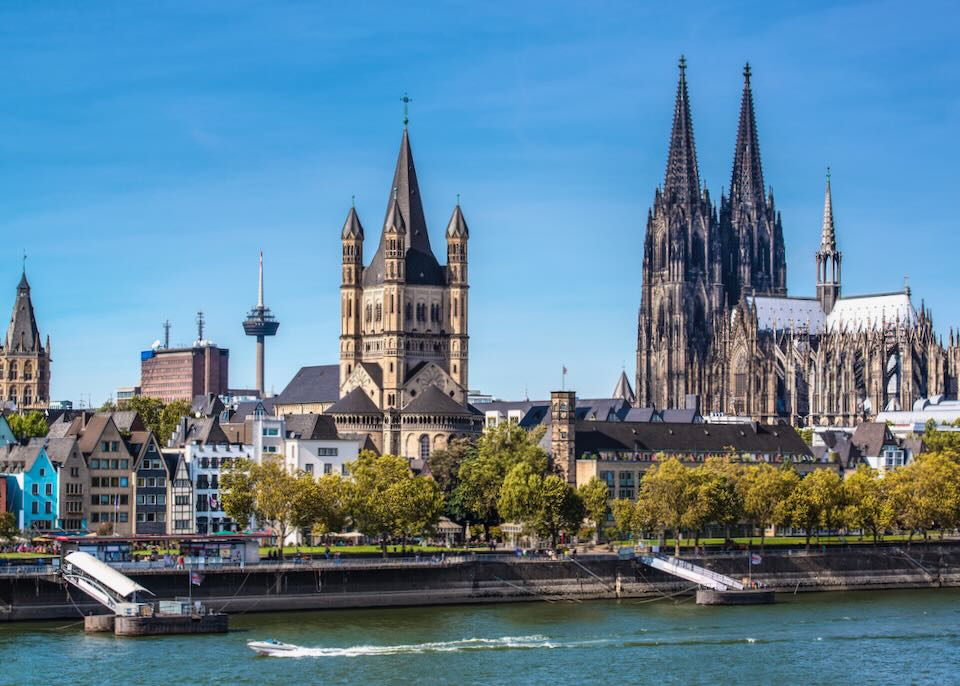
Cologne’s Altstadt district from the Rhine river.
Cologne (“Köln” in German) is Germany’s fourth biggest city and the most important in the western part of the country, established by the Romans in the 1st century AD. Though it was heavily bombed in World War II, remnants of its rich history remain, notably in its stupendous cathedral and the Roman ruins that dot the old center. While not traditionally beautiful due to post-war reconstruction, it’s a laid back, diverse, and fun place to visit, especially during Carnival or Cologne Pride in July. The local dialect is known as “Kölsch”, which is also the name of the city’s distinctive beer, best experienced in one its many traditional beerhalls.
Situated on the Rhine river, Cologne has become a popular cruise destination, and offers a wide range of hotels. However, during festivals and major events like the biennial Anuga trade show in October, hotel availability can be limited and prices may significantly increase.
Best Neighborhoods in Cologne
Cologne’s modern city center encompasses the Altstadt (Old Town), the city’s medieval heart along the Rhine, housing the cathedral and major museums, and the newer areas around Neumarkt and Belgisches Viertel, famous for shopping, dining, and nightlife. Most hotels are located in these neighborhoods. Just to the south, Rheinauhafen showcases modern dockland redevelopment, featuring a blend of residential and commercial towers, a marina, restaurants, and museums focused on chocolate and German sports.
Across the river, the Right Bank (“Rechtsrheinisch”) comprises the neighborhoods of Deutz, Mülheim, and Messe, home to Cologne’s massive trade show complex, the landscaped Rheinpark, and the cable car across the Rhine. Mülheim is known for its large and vibrant Turkish community.
Beyond the center lie Cologne’s “Veedels”, the Kölsch word for neighborhood, and this is where you’ll get a better sense of contemporary life in the city. Nippes is a diverse district with a beloved flea market, live music venues, and plenty of cozy cafés and bars. It is also convenient to Kölner Zoo, the Botanical Gardens, and the Sculpture Park. Zülpicher Viertel is known as Cologne’s “Latin Quarter,” thanks to its hip, studenty bars, shops, and restaurants, while Südstadt (South Side) and Ehrenfeld are hip, edgier neighborhoods full of excellent bars and places to eat.
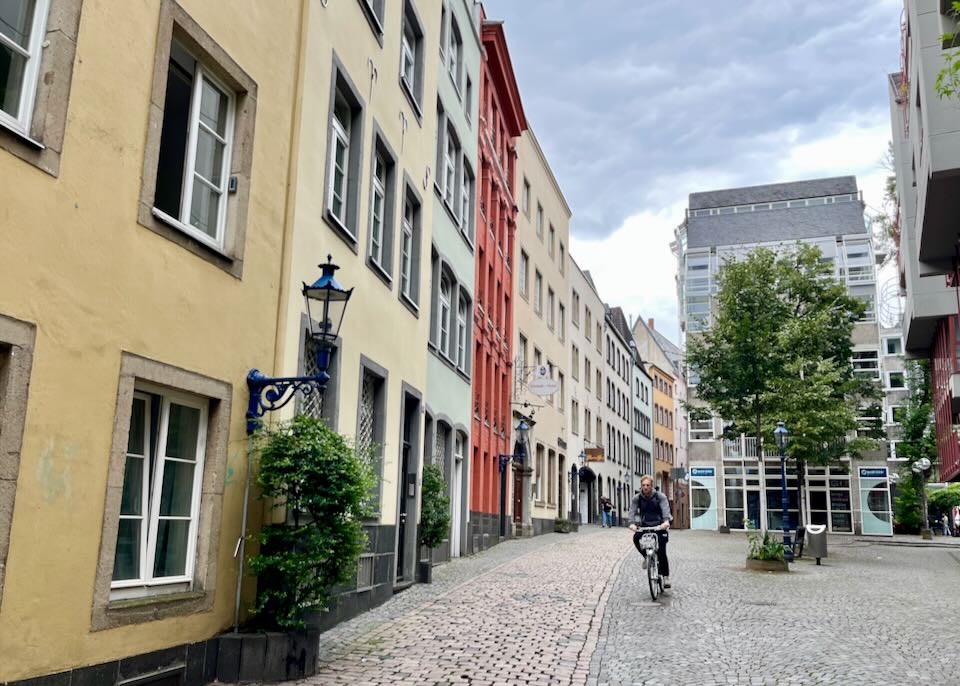
Cologne is fairly flat and very bike-friendly, with bikeshare and rental programs eaily accessible.
Getting To and Around Cologne
While it’s relatively easy to explore the Altstadt and Neumarkt on foot, public transport is good in Cologne. Public trains, trams, and buses are operated by Kölner Verkehrs-Betriebe (KVB). Single or 24-hour tickets are available for purchase, or use the KölnCard. We don’t recommend renting a car.
Cologne is relatively flat and bike-friendly, with plenty of bike lanes and river promenades to cycle on. Rent bicycles at Radstation at Breslauer Platz. You can also access the local dockless bikeshare scheme via the nextbike or KVB apps, assuming you have a smartphone with roaming. There’s also Call A Bike.
Cologne Bonn Airport is around 10 miles (17 km) east of Cologne. It’s a major hub for low-cost European airlines, with flights all over the continent and North Africa. The nearest airports with non-stop flights from North America are in Düsseldorf (45 minutes from Cologne) and Frankfurt (just over an hour away by high-speed train). S-Bahn trains run between Cologne Bonn Airport and the main train station every 15–20 minutes, with the trip taking around 30 minutes. There’s not much point in staying at the airport given how easy it is to get into the city, but if you feel the need, the best hotels are the conveniently located Moxy and Leonardo Hotel.
International high-speed trains connect Cologne with Paris (3 hours, 20 minutes), Amsterdam (4 hours), and Brussels (1 hour, 45 minutes) – change in Brussels for London. You can also take high-speed trains to Frankfurt (1 hour), Munich (4 hours, 45 minutes), and Berlin (4 hours, 15 minutes).
The Best Places to Stay in Cologne
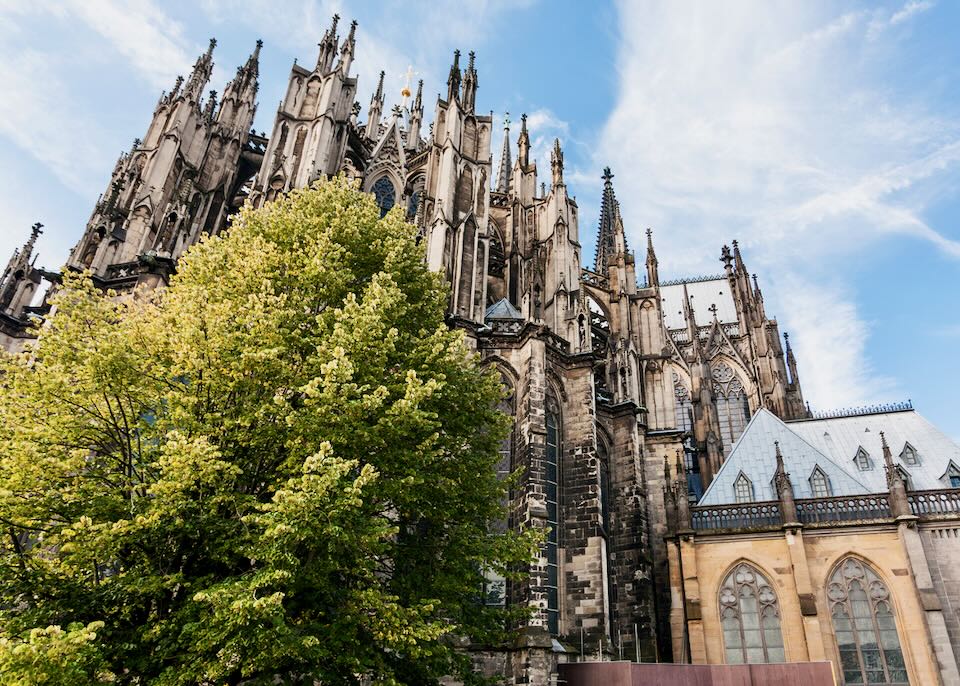
The impressive Gothic “Kölner Dom” in Altstadt. The best hotel near the Cologne Cathedral is the Excelsior Ernst.
- Best Luxury Hotels in Cologne
Althoff Dom Hotel • AMERON Köln Hotel Regent • Excelsior Hotel Ernst • Hotel Stadtpalais • Hyatt Regency Cologne • the niu Mill- Best Boutique Hotels in Cologne
Hotel Merlin Garni • Maison Marsil • Legend Hotel • Ruby Ella Hotel & Bar • Stern am Rathaus- Best Cheap & Midrange Hotels in Cologne
Eden Hotel Früh Am Dom • Mercure Hotel Severinshof • Moxy Cologne Mülheim • Zur Guten Quelle • Premier Inn Cologne City Süd- Best Hostels in Cologne
Hostel die Wohngemeinschaft • Hostel Köln • Jugendherberge Köln-Deutz • Jugendherberge Köln-RiehlBest Neighborhoods in Cologne for…
- Best Neighborhood to Stay for First Timers/Sightseeing: Altstadt or Neumarkt
Most hotels in Cologne can be found in the central neighborhoods of Altstadt (Old Town) and Neumarkt, offering plenty of choice in terms of budget, and easy access to all the main sights: the Alter Markt (the main square), the cathedral, the Römisch-Germanisches Museum (and other Roman remains), the Museum Ludwig, the Fischmarkt, Wallraf-Richartz Museum, perfume museum (dedicated to the invention of “Eau de Cologne”), and the Kolumba art museum. Cologne’s busiest shopping street, Schildergasse, runs across both neighborhoods. If traveling by train, consider the hotels around the main train station, Köln Hauptbahnhof, in the northern part of the Altstadt. Neumarkt is better for shopping and nightlife, while staying close to the river in the Altstadt is a good idea for those planning to take a Rhine cruise.The main square (“Alter Markt”) in Alstadt.
- Most Romantic Neighborhood: Belgisches Viertel (Belgian Quarter)
The most romantic thing you can do in Cologne is to take a Rhine cruise (especially at sunset), or add to the love locks on Hohenzollern Bridge, but the Belgian Quarter is the most romantic place to stay. Get a room at stylish boutique Ruby Ella Hotel & Bar and explore the streets of this hip neighborhood, home to independent stores, cafés, and bars. Sip cappuccino at Café Bauturm or Café Belgique, or sample the cocktails a Seiberts, a 1920s-style speakeasy. Belgian/French Restaurant Belgischer Hof is perfect for a romantic dinner. To the north is the tranquil Stadtgarten, Cologne’s oldest park; to the west lies the the gardens around Aachener Weiher pond, its beer garden a popular hangout in summer.- Best Place to Stay for Cologne Fair (Koelnmesse): Right Bank (“Rechtsrheinisch”) – Deutz & Messe
Easy decision – attending a trade fair at Koelnmesse you’ll save time crossing the river by staying in the neighboring Deutz and Mülheim neighborhoods, where most of the hotels cater to trade show visitors. The closest hotels, within easy walking distance, are the Dorint, Motel One, and Radisson Blu, and ibis; all pretty good.- Best Neighborhoods for Food and Restaurants: Altstadt (for traditional German); Neumarkt & Belgisches Viertel (for international); and Südstadt (for foodies)
Good restaurants and cafés are scattered throughout Cologne, but there are a few neighborhoods that stand out. The Altstadt is the place to go for traditional brauhäuser, beer halls that serve Cologne specialties like halve hahn (gouda cheese roll with onions), “Himmel un Ääd” (blood sausage with mash and stewed apples), Rhenish sauerbraten, and classic German schweinshaxe (fried pork knuckle), all washed down with the local kölsch beer. Classic spots include Brauhaus FRÜH am Dom, Brauhaus Sion (open since 1318), Brauerei zur Malzmühle (founded in 1858), Em Krützche, and Peters Brauhaus. For another local delicacy known as “rievkooche” (potato fritters), head to the Rievkoochebud Reibekuchen stall on Salzgasse. Café Reichard is a grand belle epoque venue for coffee and cake, while Mangal Döner in Heumarkt is the best of the locally beloved kebab chain. For fine dining there’s Restaurant maiBeck and maximilian lorenz.Historic Peters Brauhaus in Alstadt.
You’ll find a more diverse line up of restaurants further west in the Neumarkt and Belgisches Viertel areas: Sahila and Neobiota for brunch and fine dining, Chum Chay for Vietnamese food, Bai Lu Noodles for Chinese, Belgisher Hof for Belgian-French staples, Tigermilch for Peruvian, Takumi for Japanese ramen, and Alfredo for Italian.
If you’ve been to Cologne before or just want to get off the beaten path, head down to Südstadt, where you’ll find some of the best places to eat in the city (and very few tourists). Die Fette Kuh has a cult following for its burgers, while 485Grad knocks out pretty good pizza. Café Pausenbrot is perfect for breakfast, Johann Schäfer is an excellent beer hall, and contemporary German restaurants Haus Müller and Pottkind are wonderful places for a splurge.
Waiters in a Cologne brauhaus are called “köbes” (they usually wear uniforms with blue aprons and leather wallets), delivering glasses of beer (known as “stange”) from their “crown” trays. Köbes are known to be a bit grouchy – it’s nothing personal, it’s part of the tradition. Kölsch itself is a light, easy-to-drink lager-like beer, with around 25 different brands brewed in Cologne.
- Best Neighborhood for Rhine cruises: Altstadt
Many Rhine (and Mosel) cruises begin and end in Cologne – almost all of them dock along the Altstadt side of the river. Stay in a hotel here to be withing walking distance (or at least a short taxi ride) of the boat.Cruises on the Rhine generally depart from Alstadt, near the Hohenzollern Bridge.
- Best Neighborhood for Nightlife: Neumarkt & Belgisches Viertel
Most tourist-focused bars can be found in the Altstadt, along with the biggest concentration of traditional beer halls, though these tend to function more as restaurants today. For the best nightlife overall, head further west into the Neumarkt area, where the Friesenviertel (named after Friesenstrasse) and Belgisches Viertel are crammed with all sorts of bars, clubs, and late-night cafés. On Friesenstrasse there’s numerous places to try, but Brauerei Päffgen is good for a traditional Kölsch, Sartory-Saal often hosts concerts, and Jameson is the local Irish pub (with live sports on TV).In the Belgian Quarter, student favorite Sixpack is known for opening into the early hours; Little Link, Lorbass, Spirits, and Sieberts are cozy cocktail bars; and Einundfünfzig and Klapsmühle are decent nightclubs. Salon Schmitz on Aachener Strasse is a hip late-night café. For an edgier scene, check out the studenty “Latin Quarter” or Ehrenfeld (places like Sonic Ballroom or Live Music Hall).
For serious clubbing, head across the Rhine to Bootshaus in Mülheim; for live jazz, check out Papa Joe’s on Buttermarkt in the Old Town.
Cologne’s LGBT scene is one of the biggest in Europe, with clusters of gay-friendly bars and clubs in the Altstadt (between Alter Markt and Heumarkt), and further west on Rudolfplatz (aka the “Bermuda Triangle” or Zentralgarderobe Bermudadreieck).
- Best Neighborhoods for Shopping: Neumarkt & Belgisches Viertel (Belgian Quarter)
Cologne’s premier shopping zone overlaps the Altstadt and Neumarkt areas, with Schildergasse slicing through both neighborhoods to Neumarkt Galerie, a high-end mall. To the west, shops and boutiques line Ehrenstrasse, Pfeilstrasse, and Mittelstrasse. Get your Eau de Cologne souvenirs at Dufthaus 4711 (Glockengasse 4) or at Farina 1709 (Obenmarspforten 21), where the “Kölnisch Wasser” was actually invented. You’ll find a more eclectic range of stores in the Belgisches Viertel, with everything from records (Groove Attack) to children’s clothing (Nicola) on offer. In the Altstadt, HoheStrasse is the main shopping strip.Farina 1709, birthplace of “Eau de Cologne.”
- Best Neighborhoods for Local Vibe/to get off the Beaten Path: Südstadt (South Side) or Ehrenfeld
South of the old town lies Südstadt, anchored by Severinsstrasse (which becomes Bonner Strasse south of the Severinstorburg, the grand medieval gatehouse). It’s a hip neighborhood with some of the best restaurants, tapas bars, and beer halls in the city – come here to peruse the local cafes or to soak up the atmosphere at night. Be sure to pop in to the Südstadt Kiosk, one of the local “büdchen” (convenience stores) for which Cologne is famous. If you time it right, there’s an excellent flea market (“flohmarkt”) at Südstadion, on the first Sunday of every month. Hotel am Chlodwigplatz is a good place to stay down here.Equally fashionable Ehrenfeld lies northwest of the Altstadt, another diverse, artsy neighborhood of hip bars, restaurants, and stores. Have breakfast at Die Mehlwerkstatt, grab a coffee at Café Sehensucht or VAN DYCK Espressobar, check out the home goods at Utensil Shop Köln, and line up with locals for a tasty kebab at Kebapland. For something special, reserve a table at WALLCZKA, one of the city’s best fine dining experiences. You’ll also find Cologne’s modern Central Mosque here, as well as the 1980s Colonius telecommunications tower (though the observation deck has been closed to the public for years), and the iconic Helios Leuchtturm (a “lighthouse” built by a local electrical company in 1894). The Nachtkonsum flea market is good for cheap clothes; it’s usually open once a month on Saturday evenings (5 to 10:45pm) in Pattenhalle. Goodplaces to stay in Ehrenfeld include Black Hotels Köln, STAYERY Köln Ehrenfeld, budget B&B Hotel Köln-Ehrenfeld, and Weltempfänger Hostel.
- Safety in Cologne
Cologne is generally very safe by global and even German standards, though the usual precautions should be taken at night, especially around the main station (Hauptbahnhof), Ebertplatz (where drug dealers sometimes operate), Chlodwigplatz, and Zülpicher Platz. Pickpockets can also be an issue in busy tourist areas or during the major festivals.The 6 Best Neighborhoods in Cologne for Tourists
1. Altstadt
The Cologne Cathedral (“Dom”) and Grand St. Martin church.
Cologne’s Altstadt (Old Town), located on the Rhine’s left bank, is the preserved medieval heart of the city, now functioning as its traditional downtown. Devastated in World War II, it was reconstructed in a somewhat bland modern style, retaining only fragments of its historic architecture, including 12 Romanesque churches. You’ll also see a scattering of Roman ruins here – this was the key Roman frontier city of Colonia – including a section of Roman road, burial chambers, walls and wells.
Section of preserved Roman road in Cologne’s Altstadt.
The northern edge of the Old Town features the Köln Hauptbahnhof (main station), and the eastern side borders the Rhine, offering a pleasant tree-lined promenade and bike path – also the departure point for Rhine cruises. While not the most picturesque German old town, the Altstadt is enjoyable for a day’s exploration with plenty of good bakeries, cafes, and traditional beer halls scattered among its narrow streets and squares.
The Alter Markt, Alstadt’s central square, is surrounded by cafes and bars and hosts the popular Heinzels Wintermärchen Christmas Market in December, extending to the nearby Heumarkt. The Rathaus (Town Hall) features a 15th-century Gothic tower and the medieval Hansa Hall. North of the Alter Markt stands the Kölner Dom, Cologne’s leading attraction. This soot-blackened cathedral is a Gothic architectural marvel, built from 1248 to 1880. Visitors can climb 533 steps of the South Tower for breathtaking views or admire the medieval chapels and stained glass inside.
Adjacent to the cathedral is the Römisch-Germanisches Museum, home to Cologne’s Roman artifacts, but it’s undergoing renovations until 2025 (temporary exhibits at Belgisches Haus near Neumarkt). Nearby, the Museum Ludwig, the city’s top modern art museum, boasts an impressive early 20th-century art collection, including notable Picassos. East of the Alter Markt, the old town’s most charming area includes the narrow Lintgasse leading to the picturesque Fischmarkt on the river, with colorful townhouses and Grand (“Gross”) St Martin, the most remarkable of the “12 churches”, dating from 1150 to 1250 and featuring an impressive square tower.
Colorful Fischmarkt square on the banks of the Rhine.
West of the Alter Markt, key attractions include the Wallraf-Richartz Museum, known for medieval paintings; the Farina Fragrance Museum, celebrating the creation of “Eau de Cologne” in 1709 by Johann Maria Farina; Old St. Alban’s medieval church ruins; and the Kolumba art museum, showcasing religious art from medieval to contemporary times. This area also features Cologne’s busiest shopping streets, Hohe Strasse and Schildergasse, leading into Neumarkt.
The northern edge of the Old Town is dominated by the huge Cologne Central Station (Köln Hauptbahnhof), the city’s primary transportation hub. Stay here to be within walking distance of the trains, and the Old Town. The best hotels near the station are Sandmanns am Dom, Cologne Marriott Hotel, Excelsior Hotel Ernst, Hotel Casa Colonia, and The Savoy; at the budget end are ibis Hotel Köln am Dom and URBAN LOFT Cologne.
Note that large parts of the Altstadt are under renovation or construction, with various projects being slated for completion in 2024 and 2025, including the new Römisch-Germanisches Museum. The Archäologische Quartier (archeological zone) on Grosse Budengasse is expected to be developed into a new Jewish Museum (Jüdisches Museum/MiQua), with the remains of a medieval synagogue and Roman ruins preserved underground. The famous Dom Hotel, grand dame of Cologne hospitality since 1857 (the current building dates to the 1890s), has also been undergoing renovation for several years as part of the luxury Althoff brand and is likely to reopen in 2024.
Accommodation in the Old Town is a mixed bag, with a handful of good luxury/boutique hotels but otherwise a limited stock of fairly mediocre midrange and budget options. You’ll have a little more choice in the adjacent Neumarkt, though the Old Town is more convenient for sightseeing, the train station, and Rhine cruises.
- The Best Hotels in Old Town (Altstadt)
Althoff Dom Hotel • Hotel phone: +49 223 437900
CityClass Hotel Residence am Dom • Hotel phone: +49 221 20580
Excelsior Hotel Ernst • Hotel phone: +49 221 2701
Hotel Mondial am Dom MGallery • Hotel phone: +49 221 20630
Legend Hotel • Hotel phone: +49 221 22288777
Lint Hotel Köln • Hotel phone: +49 221 920550
Stern am Rathaus • Hotel phone: +49 221 22251750- Best Cheap/Midrange Hotels
Eden Hotel Früh Am Dom • Hotel phone: +49 221 272920
XII Apostel Albergo • Hotel phone: +49 221 250851972. Neumarkt & Belgisches Viertel (Belgian Quarter)
The modern glass Welstadthaus building was designed by the architect Renzo Piano and houses the Peek & Cloppenburg clothing store.
Neumarkt, west of Altstadt and across Offenbachplatz and Tunisstrasse, is Cologne’s main shopping area, particularly along Schildergasse, Ehrenstrasse, Pfeilstrasse, and Mittelstrasse. Key features include the Renzo Piano-designed Weltstadthaus, the Neumarkt Christmas market, the Romanesque Basilika St. Aposteln, and the Käthe Kollwitz Museum. To the south are the Rautenstrauch-Joest-Museum of ethnology and Museum Schnütgen of medieval art, housed partly in the deconsecrated Cäcilienkirche. The north side has the NS-Dokumentationszentrum, detailing Cologne’s Nazi history inside the old Gestapo headquarters, and further west are the ancient Römerturm, a well-preserved defensive tower built by the Romans around 50 AD, and the beautiful Romanesque St Gereon church.
Beyond the bustling Hohenzollernring (ring road) is the trendy Belgisches Viertel (Belgian Quarter) in Cologne’s Neustadt, encircling Altstadt since the late 1800s with a central green belt of parks and gardens. This area, ideal for exploring on foot, is filled with boutiques, art galleries, theaters, cafés, and bars, centered around Brüsslerplatz and Saint Michael’s church. Nearby is the 19th-century Stadtgarten, Cologne’s oldest park, and the Aachener Weiher gardens with a popular summer beer garden. The northern Neustadt features the MediaPark development, housing the SK Stiftung Kultur photography galleries, Cinedom cinema complex, and Köln Turm, Cologne’s tallest building. Techno music enthusiasts should visit Kompakt, a record store linked to the renowned Kompakt record label, established in 1998.
Further south, you can arrange tours of the Great Synagogue Roonstrasse (Synagogen-Gemeinde Köln), which remains at the heart of Cologne’s small Jewish community today (around 4,000 strong). It was rebuilt in 1958 after the 19th-century original was destroyed by the Nazis.
Outside of a couple of good hostels, you’ll find mostly midrange and business accommodation options in this area.
- The Best Hotels in Neumarkt & Belgisches Viertel (Belgian Quarter)
25hours Hotel The Circle • Hotel phone: +49 221 162530
Astor & Aparthotel • Hotel phone: +49 221 207120
Lindner Hotel Cologne City Plaza • Hotel phone: +49 221 20340
Maison Marsil • Hotel phone: +49 221 57001160
Motel One Köln-Neumarkt • Hotel phone: +49 221 2926920
Pullman Cologne • Hotel phone: +49 221 2750
Ruby Ella Hotel & Bar • Hotel phone: +49 221 99993640- Best Cheap/Midrange Hotels
Stadthotel am Römerturm • Hotel phone: +49 221 20930- Best Hostels
Hostel die Wohngemeinschaft • Hotel phone: +49 221 98593090
Hostel Köln • Hotel phone: +49 221 99877603. Right Bank: Deutz, Mülheim, & Messe
Deutz’ Triangle Tower offers 360-degree views of Cologne, including postcard-worthy vantages of the Alstadt from across the river.
Cologne’s Right Bank (Rechtsrheinisch), east of the Rhine, links to the Altstadt via bridges, trams, and Stadtbahn trains. The central Deutz neighborhood features a small riverside business district and the Köln Triangle with a panoramic city and cathedral view from its observation deck. The Rhein boulevard offers free scenic walks leading to Rheinpark, a 1950s park with outdoor Park Café, gardens and fountains, a miniature railway, a thermal spa, and a cable car over the river to the zoo, and more. Nearby attractions include the Tanzbrunnen open-air stage, Rheinterrassen beer garden, km 689 Cologne Beach Club, and Staatenhaus opera house, and the vast Koelnmesse trade fair complex. For families, the interactive Odysseum science and technology museum is a must-visit.
Further north lies Mülheim, a former industrial area known for its Turkish community. Keupstrasse is a hub of Turkish and Kurdish eateries, bakeries, cafes, and shops. Nearby, the converted Carlswerk factory buildings host Carlswerk Victoria and Club Volta event venues, a beer garden, a rock-climbing gym, and the Schauspiel theater. Kulturbunker offers live music and exhibitions. Notable sites include the pretty and historic St. Clemens riverside church, dating back to the 13th-century, with its iconic statue of St John of Nepomuk; and popular cafes like Café Vreiheit and Café Jakubowski.
Cross the Rhine between the Altstadt and Deutz on the Hohenzollern Bridge (Hohenzollernbrücke), a railway bridge with a pedestrian-only footpath on the south side. This is Cologne’s “love lock” bridge, with a massof multi-colored padlocks left by hopeful couples on each side of the pathway.
Most hotels in this area primarily serve the Messe trade shows, but they tend to be modern and good quality, plus you’ll often find some good deals during quieter periods.
- The Best Hotels on the Right Bank (Deutz, Mülheim, & Messe)
Adina Apartment Hotel Cologne • Hotel phone: +49 221 670210
Hotel Freiheit • Hotel phone: +49 221 5007050
Hotel Merlin Garni • Hotel phone: +49 221 8804890
Hotel Stadtpalais • Hotel phone: +49 221 880420
Hyatt Regency Cologne • Hotel phone: +49 4922 18281234
Motel One Köln-Messe • Hotel phone: +49 221 6700270
the niu Mill • Hotel phone: +49 221 17734760- Best Cheap/Midrange Hotels
Insel-Hotel • Hotel phone: +49 221 883090
Moxy Cologne Mülheim • Hotel phone: +49 221 65085350
The New Yorker Hotel • Hotel phone: +49 221 47330
Zur Guten Quelle • Hotel phone: +49 221 88058045
ibis Hotel Köln Messe • Hotel phone: +49 221 989310- Best Hostels
Jugendherberge Köln-Deutz • Hotel phone: +49 221 8147114. Nippes
“Flora”conservatory building at the Cologne Botanic Gardens, just east of Nippes.
Nippes, just 2 miles north of Cologne’s Altstadt, is a diverse and relaxed district with with enticing cafés and a handful of attractions. Main street NeusserStrasse features budget stores, Turkish eateries, and the historic Em Golde Kappe (“Golden Cabbage”) beerhall. Wilhelmplatz hosts a daily market (Mon-Sat) where cheese and produce stalls share space with clothes and bric-a-brac vendors, and a monthly flea market. The 19th-century Lutherkirche shares its space with the modern concert venue, Kulturkirche Köln. For pre-WWII architecture, visit Leipzigerplatz, a tranquil green space surrounded by 19th-century townhouses. Local cafes include Café Eichhörnchen and Törtchen Törtchen (known for its macarons).
East of Nippes, near the Rhine, a series of large parks contain several attractions: the Kölner Zoo (and aquarium), Botantical Gardens (with greenhouses and its palace-like events venue, Flora Köln), and the Skulpturenprak sculpture park. South of Nippes rises the spire of St. Agnes Church (the second highest in the city after the cathedral), and Fort X remains the best-preserved of Cologne’s 19th-century fortifications – and now features a pleasant rose garden. Grab a drink at Pico Coffee, one of the oldest and most iconic kiosks in the city. Train enthusiasts can travel venture further north to explore the Rheinische Industriebahn-Museum in the old Cologne-Nippes railway depot.
Nippes is easy to visit from central Cologne, but there are a few good hotels in the neighborhood if you’ve been to the city before and want to stay here to escape the prime tourist areas.
- The Best Hotels in and around Nippes
Adolph’s Hotel • Hotel phone: +49 221 9745150
Hotel Köln 2020 • Hotel phone: +49 221 95790566- Best Cheap/Midrange Hotels
Hotel Bürgerhof • Hotel phone: +49 221 9714150
Hotel Fortune • Hotel phone: +49 221 7158070- Best Hostel
Hostel 404 • Hotel phone: +49 221 82058305. Rheinauhafen
The Kranhäuser (Crane Towers) trio of buildings on the Cologne promenade in Reinauhafen.
Rheinauhafen, a narrow 1.2-mile strip along the Rhine south of Altstadt, is a revamped 19th-century dock now hosting a residential-commercial complex that includes a marina, eateries, and museums. It’s modern Cologne at its most stylish, especially the standout “Kranhäuser” (Crane House) residential towers that cantilever over the river. The area includes the Kunsthaus Rhenania, a cultural hub in a 1920s grain warehouse, and luxury apartments in the 1909 “Siebengebirge” grain warehouses. Key attractions include the Schokoladenmuseum (chocolate museum), Deutsches Sport & Olympia Museum (focusing on German sports history), and the Mustard Museum (around an 1810 mustard mill). Additional sights are the Malakoffturm (a former defensive tower that’s now a beer garden) and the 13th-century St. Maria in Lyskirchen Church, one of Cologne’s smallest Romanesque churches.
- The Best Hotels in and around Rheinauhafen
art’otel Cologne • Hotel phone: +49 221 801030
NH Köln Altstadt • Hotel phone: +49 221 2722880
Motel One Köln-Waidmarkt • Hotel phone: +49 221 2725950
Novotel Köln City • Hotel phone: +49 221 801470- Best Cheap/Midrange Hotels
Hotel Lyskirchen • Hotel phone: +49 221 20970
Mercure Hotel Severinshof • Hotel phone: +49 221 20130
Premier Inn Cologne City Süd • Hotel phone: +49 221 650320726. Zülpicher Viertel
Cologne University
The Zülpicher Viertel, a couple of miles southwest of the Altstadt, is centered around Zülpicher Strasse and near the University of Cologne. It is also known as the “Latin Quarter” (Kwartier Latäng) due to its hip and lively student-focused bars, shops, and restaurants. It’s an ideal spot to avoid the usual tourist trail. The area features independent theaters like Filmdose and Studiobühne Köln (knowledge of German is beneficial), and live music venue MTC. While traditional attractions are limited, the university’s GeoMuseum attracts fossil and gemstone enthusiasts. Don’t miss the renowned schnitzel at Bei Oma Kleinmann.
There’s nowhere good to stay in Zülpicher Viertel – best to visit for the afternoon or evening.
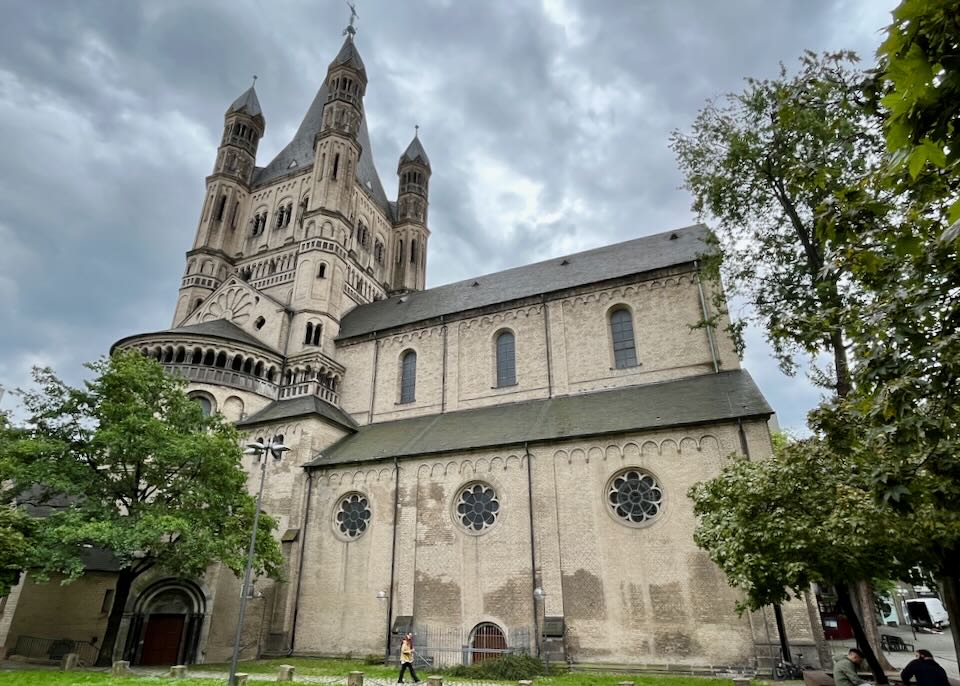
Cologne’s beautiful Gross St. Martin church dates back to 1150 AD.
Cologne Travel Tips
- Though you’ll find English speakers at hotels and tourist sites in Cologne, don’t assume everyone (especially older folks) working in shops, bars and cafés will understand you – try to learn a few words and numbers in German before you go.
- The KölnCard can be a good investment if you intend to visit a lot of sights in one or two days: it includes free travel on public transport plus up to 50 percent discount at many museums, restaurants, shops and attractions, including river cruises and city and brewery tours. Specific discounts include 20 percent off cathedral entry, 37 percent off Kolumba, 25 percent off the chocolate museum, and 20 percent off Museum Ludwig, Römisch-Germanisches Museum, and Wallraf-Richartz Museum. The card costs €9 for 24 hours and €18 for 48 hours.
- Free wi-fi is available at Cologne Bonn Airport, and at cafés and museums through the city itself. There are also handy free wifi hot spots all over the city center thanks to Hotspot.Koeln (up to 1 hour each session, after registration, but as many sessions as you want).
- The city’s main visitor center is located at Komödienstraße 44, open 9am to 6pm Mondays to Saturdays.
- Local soccer team FC Köln plays in German’s top tier Bundesliga league, with their home stadium the RheinEnergieSTADION around 4 miles west of the Altstadt. For tickets and game information, visit the official website.
- Cologne’s biggest festival is Carnival, a raucous pre-Lenten street festival celebrated during the 5-day period between “the Women’s Carnival” (“Weiberfastnacht”), and “Violet Tuesday” (“Veilchendienstag”), usually in March or April.
- For day cruises on the Rhine, contact KD Köln-Düsseldorfer or Kölntourist.
More Cologne Neighborhoods
We’ve covered our favorite neighborhoods to visit and stay in more detail above, but with more time the historic university city of Bonn, some 15 miles (25km) and 30 min by local train south of Cologne, is worth a day or so. Highlights of the former West German capital include the Haus der Geschichte, the history museum, and the modern museums along the “Museumsmeile”, plus the Beethoven-Haus, where Ludwig van Beethoven was born in 1770.
It’s also worth making time for Brühl (30 minutes by tram or train southwest from Cologne), home to Schloss Augustusburg, a dazzling 18th-century palace, the Max Ernst Museum (dedicated to the work of the local Dadaist and Surrealist painter), and the huge Phantasialand theme park, a German Disneyland.
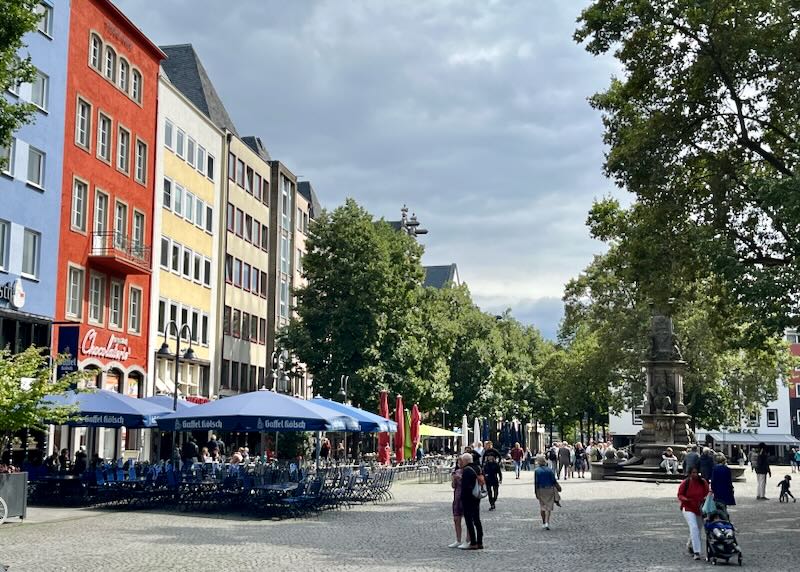
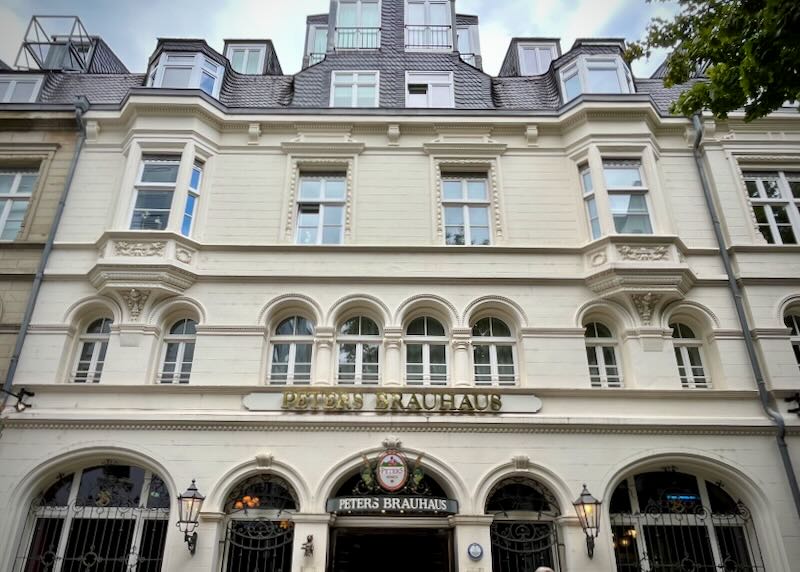
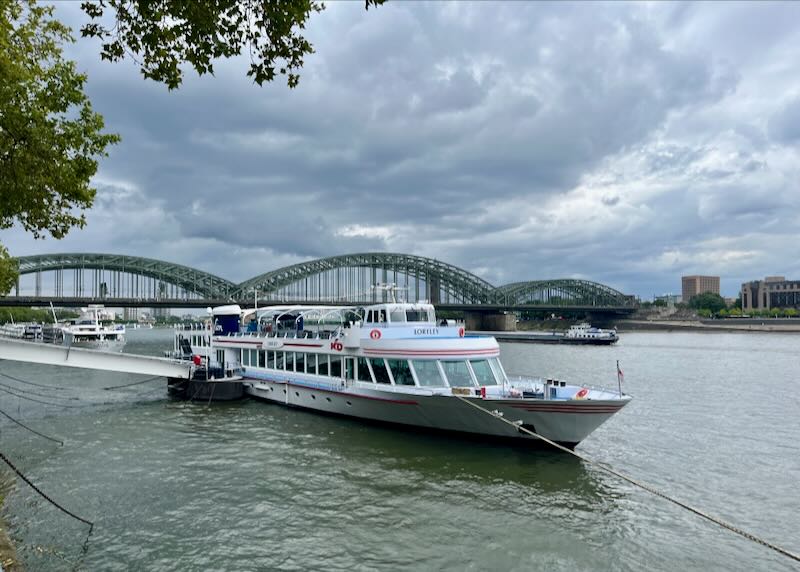
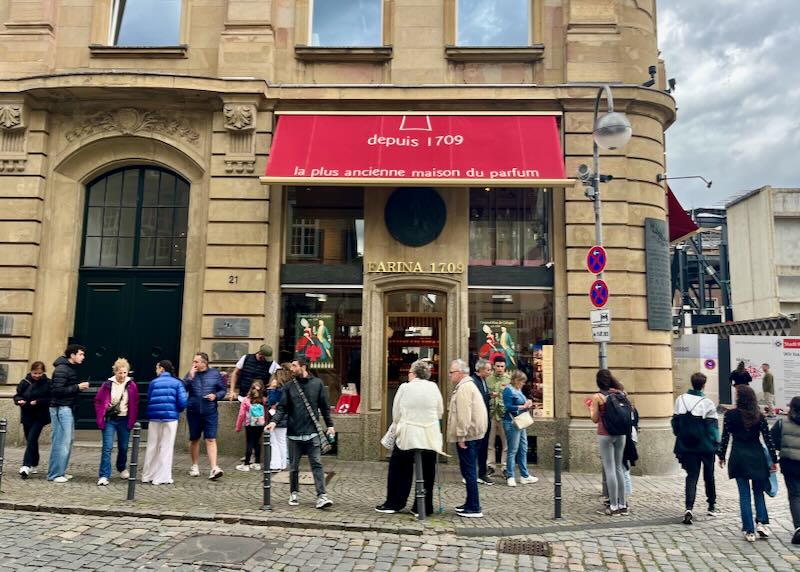
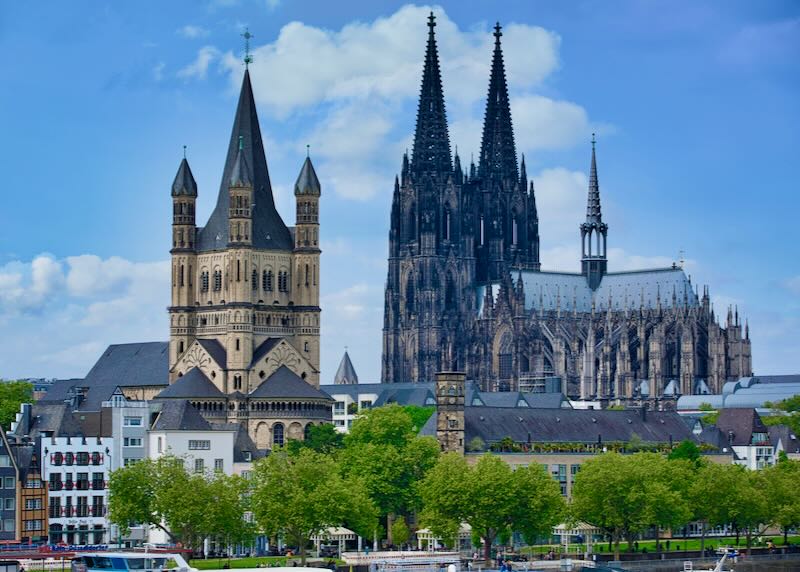
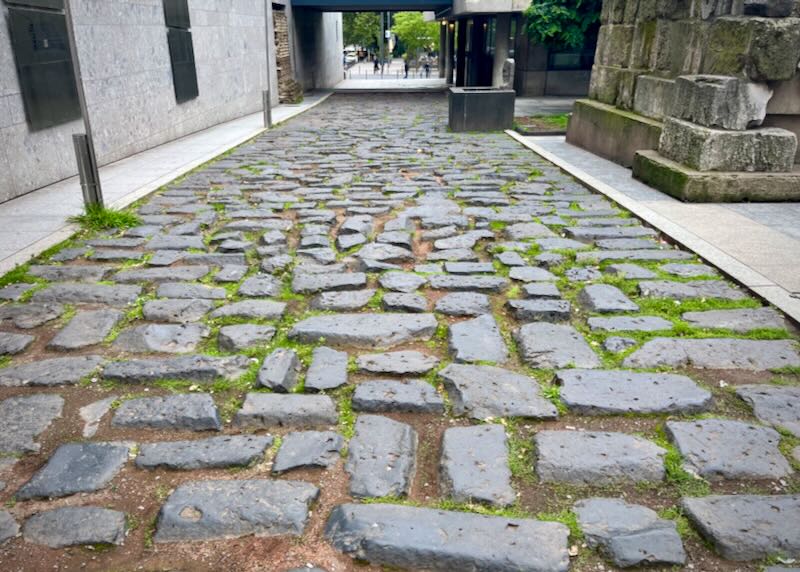
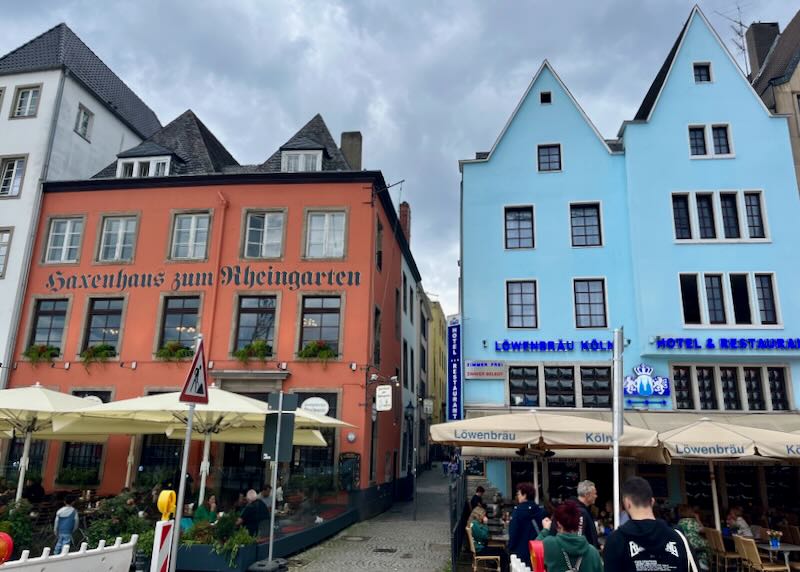
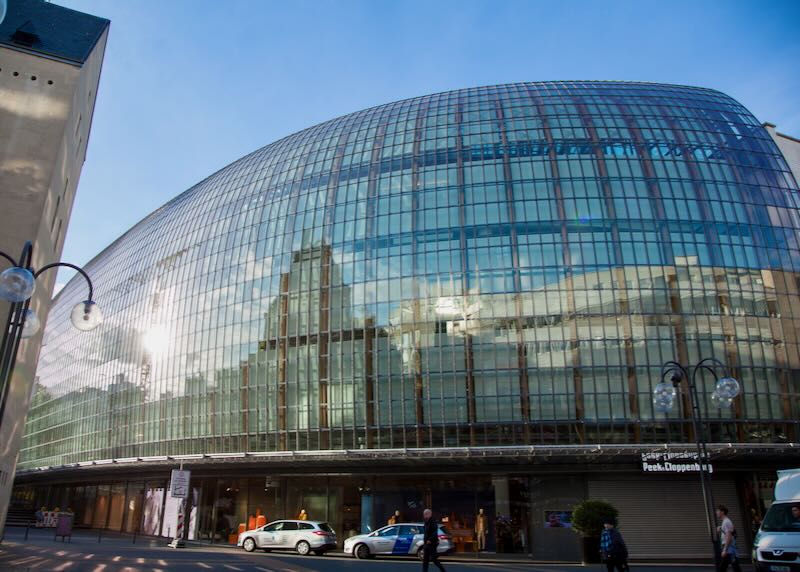
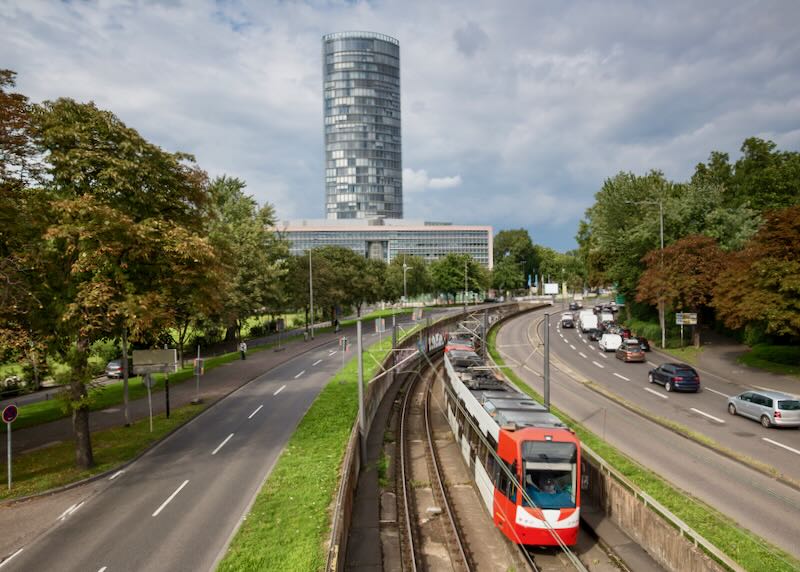
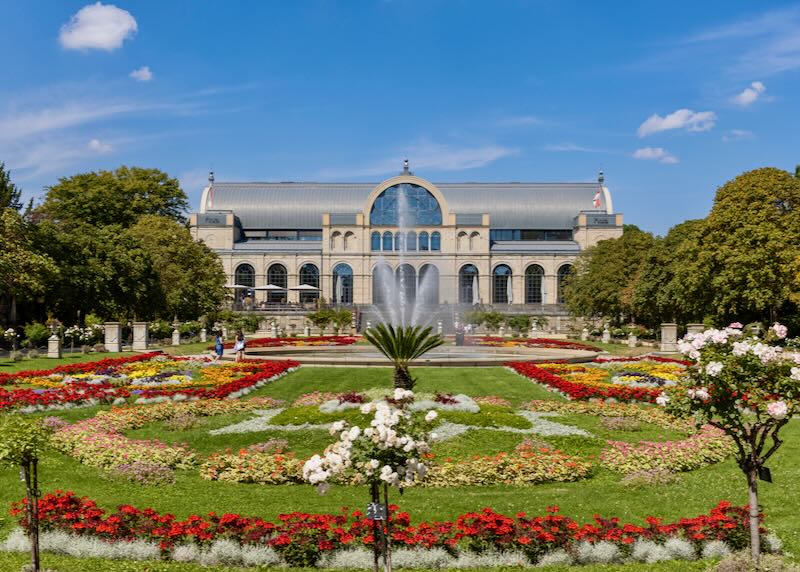
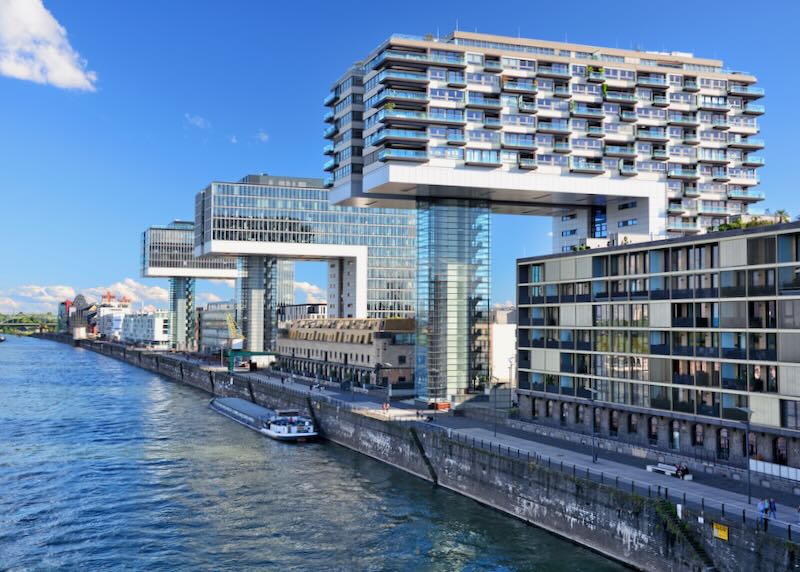
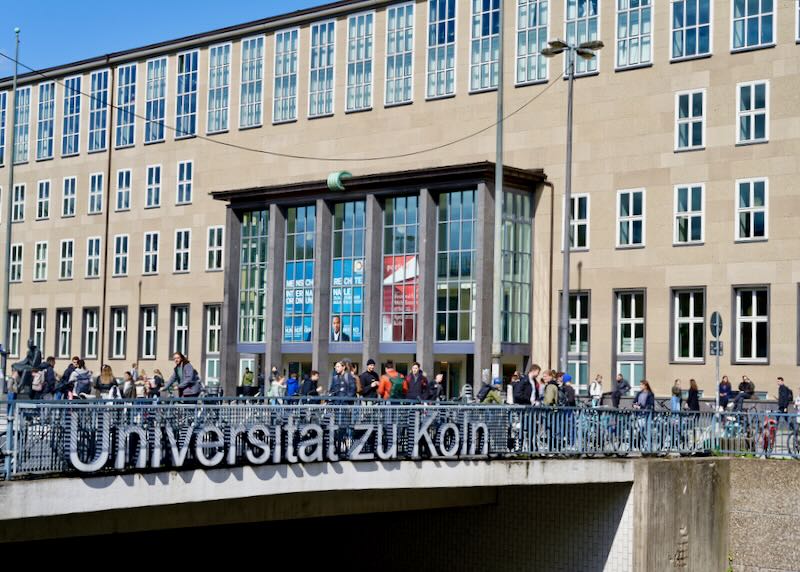
About Santorini Dave